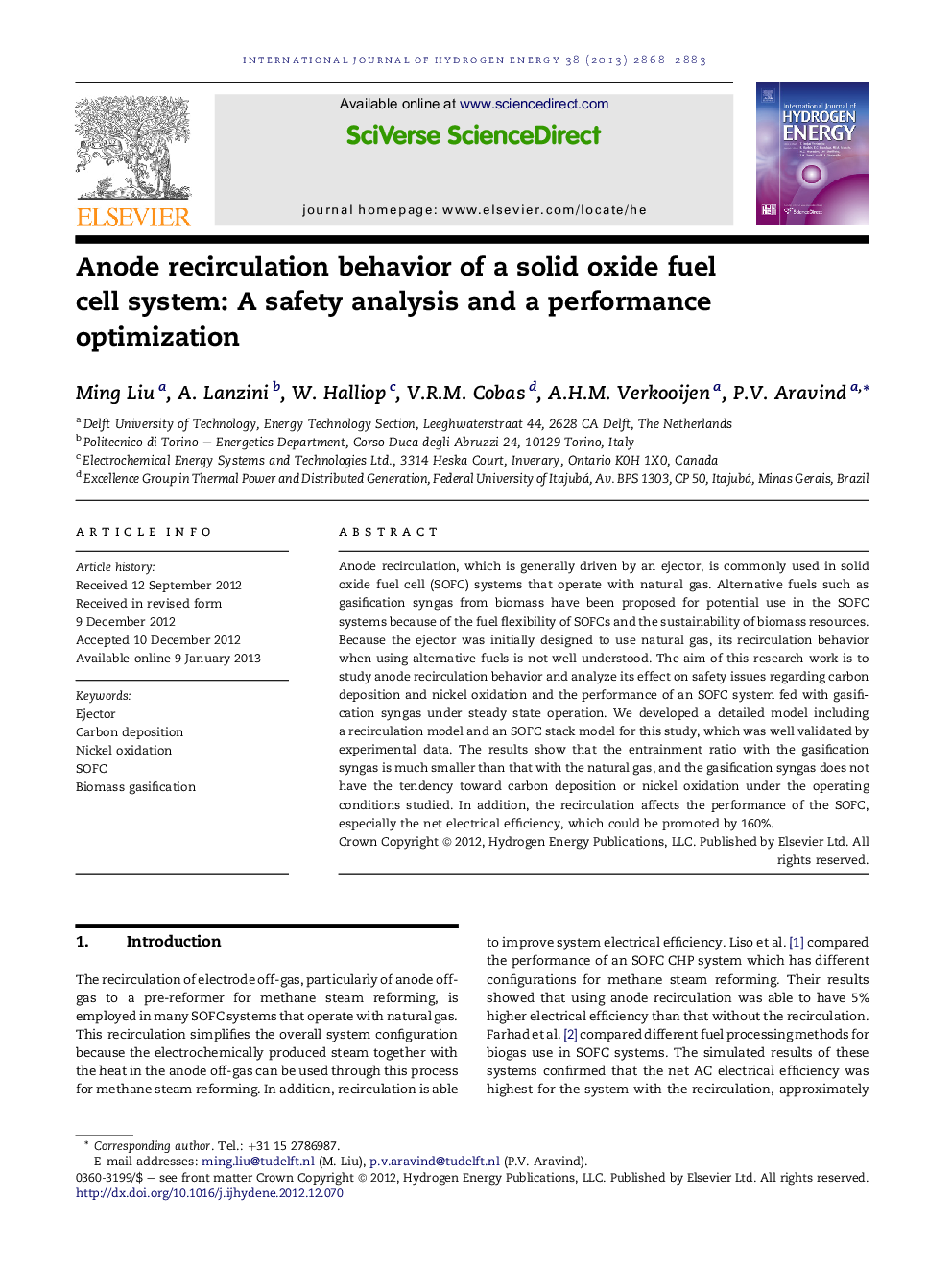| Article ID | Journal | Published Year | Pages | File Type |
|---|---|---|---|---|
| 1273819 | International Journal of Hydrogen Energy | 2013 | 16 Pages |
Anode recirculation, which is generally driven by an ejector, is commonly used in solid oxide fuel cell (SOFC) systems that operate with natural gas. Alternative fuels such as gasification syngas from biomass have been proposed for potential use in the SOFC systems because of the fuel flexibility of SOFCs and the sustainability of biomass resources. Because the ejector was initially designed to use natural gas, its recirculation behavior when using alternative fuels is not well understood. The aim of this research work is to study anode recirculation behavior and analyze its effect on safety issues regarding carbon deposition and nickel oxidation and the performance of an SOFC system fed with gasification syngas under steady state operation. We developed a detailed model including a recirculation model and an SOFC stack model for this study, which was well validated by experimental data. The results show that the entrainment ratio with the gasification syngas is much smaller than that with the natural gas, and the gasification syngas does not have the tendency toward carbon deposition or nickel oxidation under the operating conditions studied. In addition, the recirculation affects the performance of the SOFC, especially the net electrical efficiency, which could be promoted by 160%.
► The anode recirculation behavior of an SOFC fed with different fuels is examined. ► The impact of recirculation on carbon deposition and nickel oxidation is analyzed. ► A large operating pattern is found in the gasification syngas-fueled SOFC. ► The optimized system integration of an SOFC with a gasifier is identified.
